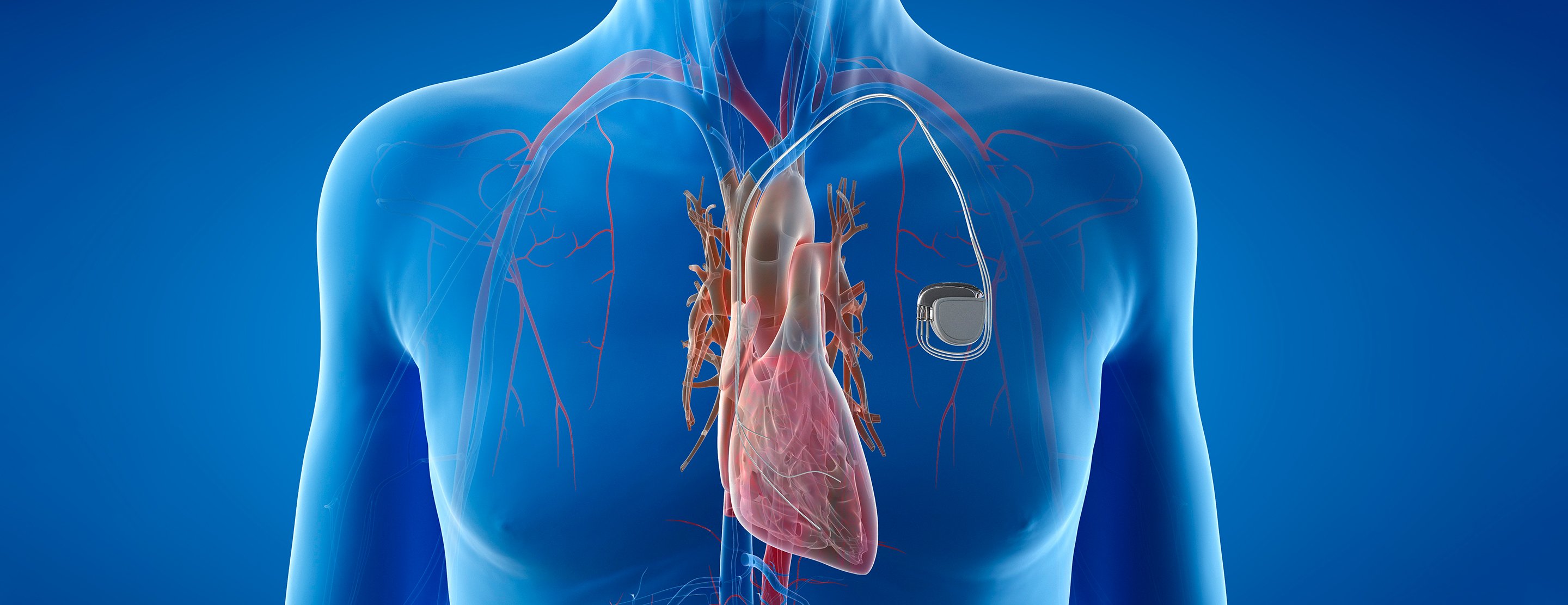Pacemaker implantation procedure
The procedure to implant a pacemaker depends on which type is used.
Implanting a pacemaker with leads
This is a one- to three-hour surgery that requires general anesthesia. The surgeon makes a small incision just below your collarbone, then inserts the lead through the incision and into a nearby vein. Guided by X-ray images, the surgeon threads the lead to your heart and secures it at one end with a tiny screw; they attach the other end of the lead to the pacemaker.
Your doctor then programs the pulse generator and places it under the skin of your chest, near the collarbone. You may see a bump under the skin where the device is located.
Implanting a leadless pacemaker
A leadless pacemaker implantation is a minimally invasive procedure, in which the surgeon uses a thin, flexible tube called a catheter to access the heart.
After giving an injection to numb the area, the surgeon inserts a catheter containing the pacemaker into a blood vessel in your groin. Then, they thread the catheter through this vessel to the lower right chamber of your heart, release the pacemaker and attach it to heart tissue. Once it's in place, they remove the catheter.
Recovery from pacemaker surgery
Immediately after your procedure, you'll be briefly monitored in a post-op area.
Most people spend the night in the hospital, but some patients can go home the day of the procedure. Before you leave, your doctor will make sure the pacemaker is programmed properly for your needs.
For the next month, you should avoid exercising intensely and lifting anything heavier than 10 pounds. If you experience discomfort, you may need to take over-the-counter medications. Ask your doctors which pain relievers are safe for you.
You will be scheduled for a one-week checkup to make sure your incision is healing well. This visit may be in person or via video. About one month after the procedure, you'll have a follow-up visit with your doctor.
You will be monitored by our device clinic or your local doctor. We'll provide you with special equipment to connect your pacemaker to a phone line for remote testing to make sure everything is functioning properly and monitor for abnormal heart rhythms. The pacemaker can be reprogrammed as needed.
Complications from pacemakers
In general, any complications from a pacemaker are from the surgery to place it. Most are temporary, and serious complications are rare. Complications may include:
- Allergic reaction to anesthesia
- Bleeding
- Bruising
- Damaged nerves or blood vessels
- Infection at the incision site
- Collapsed lung (very rare)
- Punctured heart (very rare)
Electrical interference with your pacemaker
Modern pacemakers are less sensitive to other electrical devices than older models, but certain appliances or machinery can still cause interference. For example, you should avoid:
- Keeping a phone in a pocket over your pacemaker
- Prolonged standing near appliances, such as microwave ovens
- Prolonged exposure to a metal detector
- High-voltage transformers
Your doctor will give you thorough instructions on how to avoid electrical interference with your pacemaker.

















